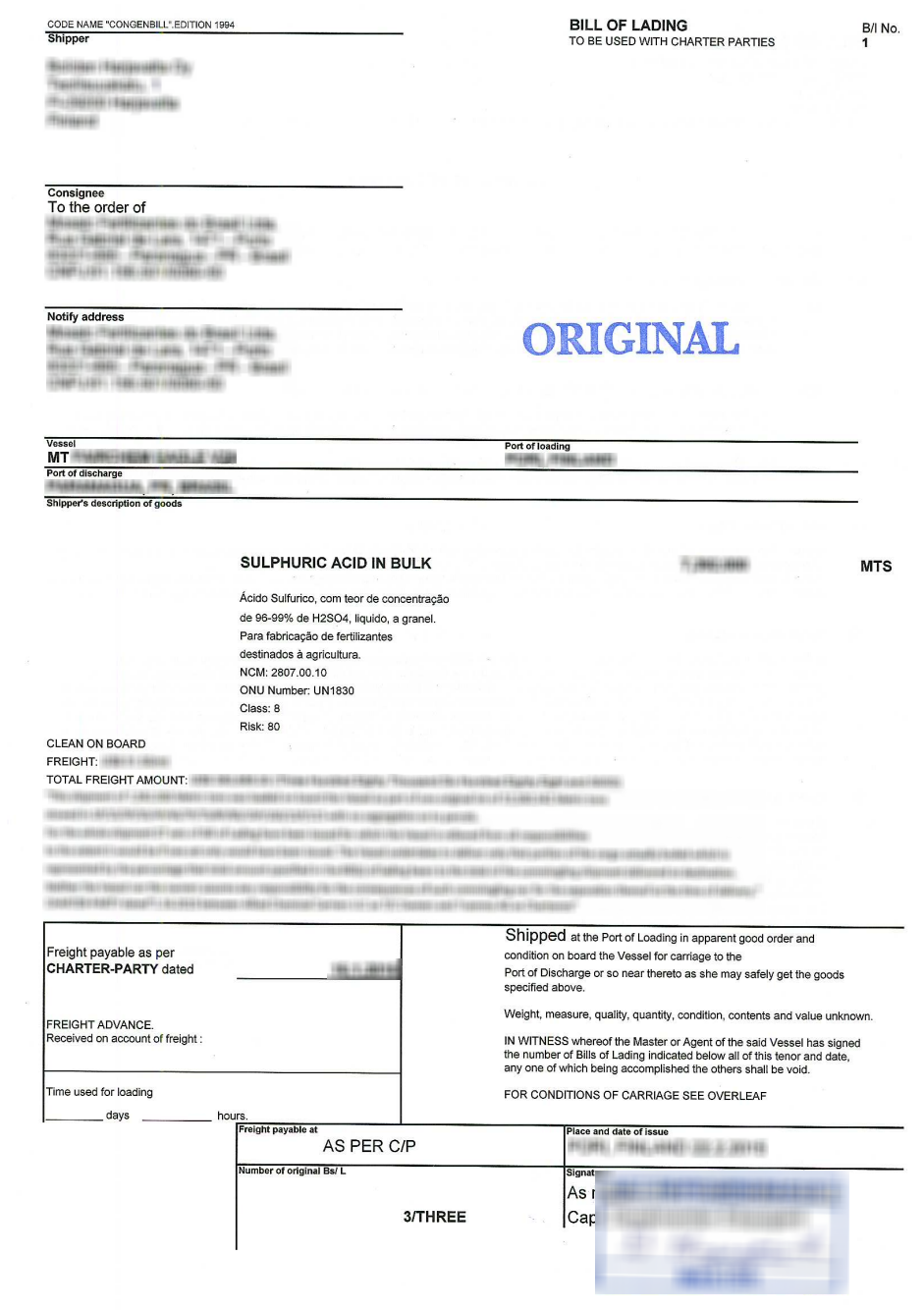Dangerous Goods Declaration vs Bill of Lading, which document stand penultimate in ensuring safety of life at sea and prevention of marine pollution?
Sometimes disputes arise on accuracy of details of dangerous goods in Bill of Lading vs Dangerous Goods Declaration. This may turn complex when NVOCC issues House Bill of Lading to shippers and carrier issue Master Bill of Lading to NVOCC.
In the case of MSC Fleminia the reason for explosion was, argued by some parties, placed on cargo of Divinylbenzene shipped in tanks. The accident resulted in death of three crew members, massive structural damage, damage to other container cargos and loss of many containers.
Parties involved in this case are below, excluding Cargo interests (of other cargo), Estate and survivors of the Chief Officer, Owners and shippers of certain chemical cargoes, Vessel owner;
- Shipper
- Tank Operator (NVOCC)
- Freight Forwarder
- Intermediary who had contractual relationship with tank operator in the creation of ocean bill of lading
- Carrier
Shipper contracted with Tank Operator for shipment of three containers of Divinylbenzene from Port of New Orleans to Antwerp on board MSC Flaminia, shipper sent the initial booking request to tank operator, tank operator confirmed the booking three days later, tank operator used the service of intermediary to process other documents which includes the ocean bill of lading. Bill of lading may also contain stowage instructions.
Initial shipping instructions received by the intermediary from freight forwarder stated stowage instructions as “DO NOT STOW NEAR HEAT SOURCES. STOW ABOVE DECK FOR TEMPERATURE MONITORING.” Intermediary entered these instructions into the system and submitted to the carrier. When carrier sent back the master bill of lading the intermediary neglected to notice that the stowage instructions were not included.
Tank operator (NVOCC) submitted the primary and final Dangerous Goods Declaration (DGD) to the carrier, booking information did not contain any special treatment for the divinylbenzene cargo. Cargo was loaded on the vessel on 1st July 2012. on 14th July morning there was an explosion in vessel’s hold no. 4.
Let us not go into the judgment and the merits but look at the documentation required by IMDG Code and its importance for safe stowage of dangerous goods on board vessels.
Which document shipper must submit to the carrier?
Shipper must hand over the dangerous goods declaration (DGD) to the carrier, section 5.4.1.1.1 of IMDG Code. Additional documents may be required by section 5.4.4 of IMDG Code.
Which documents are required on board ships?
Chapter 5.4 of IMDG Code requires Each ship carrying dangerous goods and marine pollutants to have a special list, manifest or stowage plan setting out, in accordance with regulation VII/ 4.2 of SOLAS, as amended, and with regulation 4.2 of Annex III of MARPOL, the dangerous goods and marine pollutants and the location thereof. This special list or manifest must be based on the documentation and certification required by IMDG Code, that is dangerous goods declaration (DGD).
This special list or manifest must contain in addition to the information in 5.4.1.4, Dangerous goods description, 5.4.1.5, Information required in addition to the dangerous goods description, and for UN 3359 FUMIGATED CARGO TRANSPORT UNIT in 5.5.2.4.1.1, the stowage location and the total quantity of dangerous goods and marine pollutants.
Will carrier check Bill of Lading while accepting dangerous goods?
No. Carriers process the initial booking request against IMDG Code, other regional/national regulations, vessels’ DOC, port regulations and accept or reject the booking without looking at bill of lading. Later when shipper submit the dangerous goods declaration (DGD) carrier amend the initial booking, if there is difference between initial booking and dangerous goods declaration (DGD).
At no part carrier check bill of lading for accepting or stowing dangerous goods.
Decision to stow dangerous goods on or under deck is basis stowage categories assigned to UN Number in IMDG Code and carrier’s own policy. A carrier may decide to load only on deck the cargoes which are permitted by IMDG Code on or under deck. Carrier will never load under deck the cargoes which IMDG Code prohibits under deck.
Shippers requiring special stowage such as ON DECK ONLY for a cargo which is permitted under deck by IMDG Code may request the carrier via booking or special arrangement, never through bill of lading, such stowage request may not be considered.
Opinion & Order, United States District Court, Southern District Of New York Re M/V MSC Flaminia can be found here
Further reading


 WhatsApp your queries
WhatsApp your queries
Thanks for publishing such a useful article! I just shared this article with my friends on facebook and twitter, keep up the good work 😀
Thank you for sharing
Regards/Shashi
Thank you for your article, very clear and useful!
If I understand correctly, the shipper has no obligation to describe the dangerous good (with UN No and Class maybe) on the BL ? He can just fill in the DGD ?
Thanks
Benjamin,
Thank you for your valuable comment.
One of the primary requirements of a transport document (DGD) for dangerous goods is to convey the fundamental information relative to the hazards of the goods.
IMDG Code does not mention about bill of lading except for excepted packages of radioactive material of class 7 which does not require DGD.
Every decision and conclusion about dangerous goods for stowage, segregation etc. is derived from shippers’ dangerous goods declaration.
You may be interested in the topic whether freight forwarders are authorized to sign DGD, see link are freight forwarders authorized to sign imo dangerous goods declaration